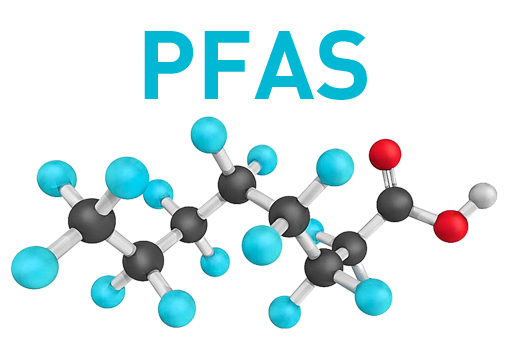FEDERAL:
- On August 26, 2022, EPA issued a proposal to designate two of the most widely used PFAS as hazardous substances under CERCLA, or Superfund. The substances of concern are Perflourooctanoic Acid (PFOA) and Perfluorooctanessulfnic Acid (PFOS). This rulemaking would require transparency around releases of these chemicals and would hold responsible parties accountable for cleaning up contamination. On September 6, 2022, EPA published the NPRM in the Federal Register commencing the public comment period. The NPRM identified a 60-day public comment period ending November 7, 2022. WTS will continue to monitor and advise as this rule becomes final.
- In June 2022, EPA released four drinking water health advisories (HA) for PFAS. HA documents provide technical information on chemical and microbial contaminants that can cause human health effects and are known or anticipated to occur in drinking water. HA values/levels identify the concentration of a contaminant in drinking water at which adverse health effects and/or aesthetic effects are not anticipated to occur over specific exposure durations (e.g., 1 day, 10 days, a lifetime). EPA issued interim updated drinking water health advisories for perfluorooctanoic acid (PFOA) and perfluorooctane sulfonic acid (PFOS) that replace those EPA issued in 2016. At the same time, EPA also issued final health advisories for two other PFAS, perfluorobutane sulfonic acid and its potassium salt (PFBS). These interim health advisories will remain in place until EPA establishes a National Primary Drinking Water Regulation.
- Also in June, EPA issued its first test order under EPA’s National PFAS Testing Strategy, that will require PFAS manufacturers to provide the agency with toxicity data and information on categories of PFAS chemicals to inform future regulatory efforts. EPA’s hope is that this strategy will identify important gaps in existing data and to select representative chemicals within identified categories for additional study. EPA is taking a phased approach to issuing test orders pursuant to the strategy beginning with human health effects on representative test substances for 24 PFAS categories in Phase I.
- In May, EPA added 5 PFAS compounds to the list of risk-based values for site cleanups (remediation). EPA uses these established values to help determine response levels and drive remediation activities.
- In April, three Clean Water Actions were announced by USEPA. Of particular interest is a memorandum addressing discharge levels of PFAS at the source of discharge as well as obtaining more comprehensive monitoring information that will shape future regulations.
- We note with interest that the bulk of USEPA’s activities continue to focus on remediation of potentially PFAS contaminated sites as well as addressing clean water concerns. WTS will continue to monitor these activities as well as activities around waste classification and disposal/treatment requirements.
STATE:
- Regulatory activities around PFAS compounds have also been brisk on the state level with a heavy focus on drinking water standards. As of July 2022 the following states have established Water Regulations around PFAS: CA, CO, CT, DE, IL, ME, MD, MA, MI, MN, NH, NJ, NY, NC, OH, OR, PA, RI, VT, WA and WI. Many states are also beginning to regulate the production, use and management of PFAS compounds. Be sure to contact the relevant state agency for any details regarding the state that you operate or live in.
Also note that USEPA has recently released a report on “A Year of Progress Under EPA’s PFAS Strategic Roadmap” which details both actions taken and proposed under their regulatory framework for PFAS. Here is a link to the same: https://www.epa.gov/pfas/pfas-strategic-roadmap-epas-commitments-action-2021-2024
As always, if you have any questions on this matter, please do not hesitate to contact your WTS Technical Representative.
Brian Burns

